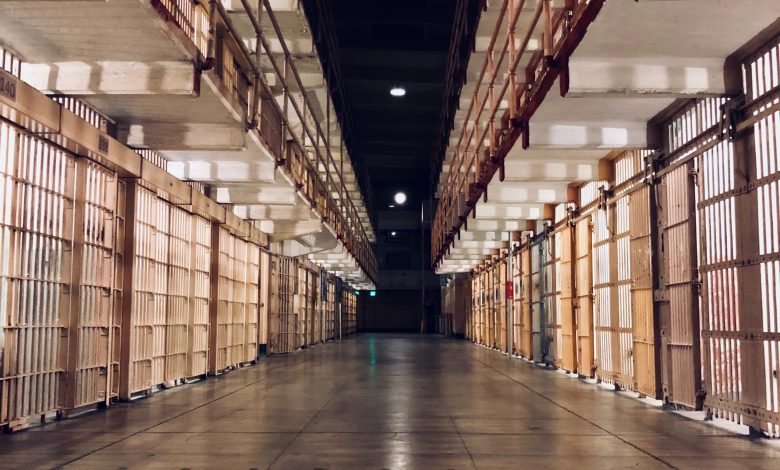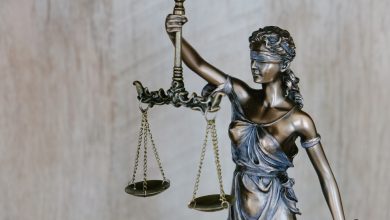Racial Minorities and Conviction Rates Explained

Incarceration itself has become a rising occurrence among Americans, and it continues to consistently show evidence of an unproportional amount of those incarcerated as racial minorities. According to a University of Georgia sociologist’s research, 8 percent of the total US population are convicted felons. The more surprising number may be that 33 percent of the male, African-American US population has a felony conviction. It’s important to note, however, that these incarceration rates don’t necessarily match up with the crime statistics either, as the Stanford Center on Poverty and Inequality notes:
It is important to bear in mind that racial and ethnic disparities in incarceration are not a reflection of trends in crime or victimization. The concentration of incarceration in racial and ethnic minority groups is due to shifts in policing, prosecution, and sentencing that disproportionately affect historically disadvantaged groups.
The next obvious question is: then what causes this racial disparity in the United States’ conviction rates? Some of these issues include:
- Police contact with racial minorities
- Pretrial detention
- Sentencing policies
- Parole terms
- Post-prison consequences
In order to combat this, there have been recent methods implemented and legislation passed, especially in the last decade. While states and the federal government must lead the way in the reform of these conditions in order to reduce this discrepancy, fighting implicit racism on an individual level is key. Being aware of these disparities and what your rights are as a racial minority helps to ensure that balance is not going unchecked, and that we can get closer to reducing incarceration rates throughout the country.
Causes of Racial Disparity in Convictions

Police Contact with Racial Minorities
Some evidence goes to show that police tend to have more violent interactions with black Americans than white Americans. In 2015, anthropologist Cody T. Ross conducted a geographical study building upon the US Police Shooting Database to determine the county-level risk ratios for being shot by a police officer depending on race and whether the victim was armed or unarmed. While results varied greatly by county, he found that there is a significant racial disparity with the amount of unarmed black citizens versus unarmed white citizens. Unarmed black Americans were 3.49 times more likely to be shot than unarmed white Americans.
Additionally, Hamline University professor Ryan Jerome LeCount found in his study that white police officers were more likely to be racially resentful, see blacks as violent, and minimize anti-black discrimination than their white counterparts. Stanford social psychologist Jennifer Eberhardt, PhD, and her fellow colleagues examined 13 months of traffic stop data from 2013 – 2014 in Oakland, California. Of the 28,119 stops made, 60 percent were African American. Many states also have what are called stop and frisk laws, which allow officers to stop individuals and frisk them down, as long as they have probable cause. In 2013, New York’s Southern District Judge Shira A. Scheindlin ruled it unconstitutional because the state’s officials “turned a blind eye to the evidence that officers are conducting stops in a racially discriminatory manner.”
However, it is important to note that there are also other studies that show that, although there is unarguably a racial disparity, it is not a result of police officers’ racial biases. Many of these cases determine that the reason why blacks are incarcerated more than whites is because they commit more crimes. However, it can also be that the belief that blacks are more likely to commit crime itself may be what causes more police interaction in the first place. Eberhardt and her colleagues hold that, while it may not be a deliberate result of bias, it is most likely a result of “unexamined cultural norms, beliefs, and practices.”
A lot of this directing of crime responsibility more heavily towards blacks is often considered a product of the War on Drugs that the country has been experiencing for the last five decades after being initiated by President Richard Nixon. This is because many believe that the initial war was begun by attacking specifically heroin and cocaine – drugs that were more heavily used in poor, black communities. While they have now turned their focus more towards marijuana, we still see a disparity in the amount of marijuana arrests in black Americans versus white Americans – black Americans are 3.73 percent more likely to be arrested for marijuana possession, according to the ACLU.
Pretrial Detention
Because of a number of reasons, black arrestees are less able to post bail and be able to wait freely until their trial, something that actually has severe effects on trial results. It’s shown that it results in higher conviction rates, as well as less desired plea bargains and longer prison sentences – sometimes versus no sentence at all.
As black Americans are also disproportionately low-income, they have much harder times posting bail – if a bond is allowed at all, that is. The National Institute of Corrections reports that racial minorities are more likely to have bail denied or a higher bond required, and as a result, are detained more often that whites because they cannot pay bond.
Sentencing Policies
In their Report to the United Nations on Racial Disparities in the US Criminal Justice System, The Sentencing Project – a research and advocacy center focusing on reducing incarceration rates and reducing disparities in the criminal justice system – explains how racial minorities tend to receive harsher penalties, for the following reasons. For one, they hold that federal prosecutors are twice as likely to charge black citizens with more severe crimes – those that have mandatory minimum sentences – versus whites committing the same crime. On a state level, prosecutors are more likely to use habitual offender sentencing on black defendants than other similar white offenders. They also point out a policy in particular that has a large effect on receiving aggravated sentencing. While some states have implemented drug-free school zones, in which the possession or selling of drugs comes with harsher penalties, these zones especially affected tightly-packed, urban communities – making blacks and Latinos 96% of those affected. Additionally, racial minorities – who tend to be more impoverished than whites – often have less access to decent defense, and instead have to use public defense, who often have large amounts of cases to take on, less training, and inadequate resources. This can result in more convictions and heavier sentencing in the courtroom for minorities.
Parole Terms
Criminologists Beth M. Huebner and Timothy S. Bynum found in a study conducted on young, serious offenders in one state that, as they should be, those on parole boards heavily consider community protection, along with how serious the current offense is, how they’ve behaved while incarcerated in the past, and what the parole guidelines require. However, they found that there were direct effects of race and ethnicity on these decisions as well, as reports show that black defendants are sentenced to longer times in prison before being eligible for parole versus similar white offenders.
Additionally, a New York Times investigation found that there are disparities in the punishment of misbehavior while incarcerated as well, and the discrepancy was especially high in cases that involved disrespecting a correctional officer.
Finally, once given parole, black offenders on probation were more likely to have it revoked, according to the Urban Institutions evaluation on the rates in: Dallas County, Texas; Iowa’s Sixth Judicial District; Multnomah County, Oregon; and New York City. It was to the point that it did “raise concerns about the presence of bias to the disadvantage of black probationers.”
Post-Prison Consequences
There’s no doubt that, for any ex-offender finally walking out of those prison doors, life is going to be a bit harder. The jail time, unfortunately, is not the end of the consequences that felons face once rejoining society. Not only do they have a more difficult time finding employment with a record, but it also crosses into their need for reliable housing, a way to get to work, licensing for work, welfare assistance, student loans, and much more, putting black Americans at a further disadvantage, as they are faced with these consequences more often than whites.
They also have their rights to vote revoked – called disenfranchisement, which means that we have less African Americans able to vote considering their population in the country. In 2016, African Americans had four times the amount of disenfranchised voters than white Americans – a rate of 7.4 percent unable to cast their vote in the running of the country.

What Has Been Done to Combat the Disparity?
Several states and even the federal government have put certain policies and laws into place in order to make a difference in this large disparity.
- Federal: Involving the War on Drugs, penalties for possession of crack cocaine and powder cocaine were vastly different – which seemed to be racially biased, as many pointed out that African Americans more often used crack cocaine, while whites used powder. The Fair Sentencing Act in 2010 brought the previous disparity in sentencing for the two drugs from 100:1 to 18:1. The next year, they also retroactively applied this law to those who were incarcerated for the drug already, leading to these offenders – 85% of which were black – having their cases reviewed. The Equal Employment Opportunity Commission made it clear in 2012 that those who administer “a criminal background check that disproportionately excludes people of a particular race, national origin, or other protected characteristic” in cases where it isn’t relevant to the position can be found in violation of Title VII of the Civil Rights Act of 1964
- Illinois: This state has made efforts to provide their drug offenders with assistance versus being put back into the system and incarceration with a program called Law Enforcement Assisted Diversion (LEAD). They now have the option to visit with a counselor when they are picked up on possession or sale of crack, heroin, and other drugs. They can receive housing, clothes, college tuition, books, fitness classes, and more, as well as direction in how to apply for this and more assistance, helping them to get back on their feet and hopefully stay out of prison.
- New York: Along with deeming the stop and frisk law unconstitutional, New York also implemented a policy in which they would treat small possession of marijuana charges as non-criminal offenses, resulting in only a fine versus a jail sentence.
- Indiana: This state reduced their drug-free zones from 1,000 feet surrounding the school to 500 feet, as well as removing them from areas like public housing and youth program centers. They also now require that there was reasonable belief that a minor would be in the area. Connecticut, Delaware, Kentucky, Massachusetts, New Jersey, and South Carolina have also followed suit with amendments to their laws.
- Iowa, Connecticut, and Oregon: These states now require a racial impact analysis to be conducted before codifying a new law or changing previous criminal penalties, while Minnesota allows this as an elective. This allows them to ensure that the law is not inadvertently unfairly targeting racial minorities.
- Connecticut, Maryland, and Wisconsin: Special prosecutors are required to be involved on cases of police misconduct in cases where local district attorneys are prosecuting law enforcement. This allows to maintain justice even among those who work together daily.
Various other efforts being used include:
- Body cameras on all police officers
- Expanding community programs as alternative sentencing
- Improving resources for repeat and drug offenders
- Considering socio-economic involvement on bail and sentencing
- Addressing housing insecurity
- Ending denial of federal cash assistance and food stamp benefits
- Expanding voter eligibility
- Reclassifying low offenses from felonies to misdemeanors

What Can Be Done?
The Sentencing Project offers these solutions:
- End the War on Drugs: This would involve cutting back on more lower drug offenses, instead focusing on offering alternative sentencing and drug prevention and treatment programs when needed. It can even be funded by the savings from the cost of resources that would be required in order to pursue charges and a conviction.
- Eliminate mandatory sentences: If these are abolished, judges are free to view each defendant on a case-by-case basis, considering all aspects of that specific individual’s circumstances.
- Address implicit racism: As this is something that some may not even realize is occuring, education is key in order to reduce the effect this has on pursuing criminal convictions with racial minorities. Research must be done in order to determine what causes these ideas and how they can be combated, and then training must be developed and implemented to ensure law enforcement is effectively maintaining the law of the land. Additionally, de escalation tactics and ways to avoid using excessive force when possible are other excellent trainings to pursue.
- Requiring racial impact tests nationwide: This will allow the country to ensure that, from now on, laws will not be created that further this disparity, and that all aspects of the citizens impacted by the law will be considered.
- Reduce use of bail: Using bail greatly places a hardship on those from low economic classes, which puts less focus on whether the offender is actually of any danger to the community and more on their ability to pay a large amount of money to get themselves out. This will allow low-risk offenders to not be detained until their trial, giving them precious time to prepare their case and improve their sentences.
- Review collateral consequences: It has come to a time where it is evident that those who are incarcerated have a hard time getting back on their feet because of collateral consequences following their convictions, most stemming from biases of the general public. Efforts should be made to take a look at policies that may cause this or make it worse. Allowing ex-offenders to have a chance can greatly decrease their chances of becoming repeat offenders, lost in the system.
- Improving public defense and other resources: Racial minorities in low economic classes see their chances falter when they’re given public defenders, and there isn’t much they can do about it. Funding should be increased in order to ensure that all citizens truly get their right to be properly defended in the court of law and judged by a jury of their peers, hopefully with no racial bias.

The racial disparity in conviction rates in America is quite extreme. As a nation that is already a leader in incarceration rates, seeing such a large majority of races being put behind bars is particularly worrying. There are many deep-rooted causes of this issue, dating all the way back to a general social inequality, racial biases, and then a seemingly profiling War on Drugs in the 70s. This is further exacerbated by police interaction, an inability to post bail and acquire proper defense, harsher sentencing and biased policies, lower chances of parole and higher chances of revocation, and post-prison challenges faced, among countless more. While some states and even the federal government are making their strides to make a difference, it is likely to take a country-wide initiative to recognize the issue, gather appropriate data to come up with the most effective strategies to fight it, and then implement them. In the meantime, efforts can be made on federal, state, local, and individual levels in order to help prevent or lessen the impact that these issues project on racial minorities.



